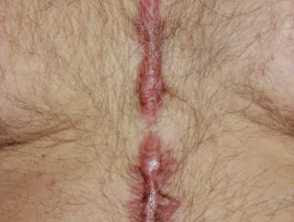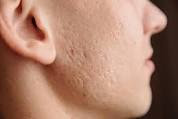**Understanding Keloids and Hypertrophic Scars: A Deeper Look**
Scars tell stories. They mark moments in our lives, reminding us of experiences both joyful and painful. However, for some individuals, scars can be more than just reminders. They can become a source of physical discomfort and emotional distress. Two types of scars that often provoke such reactions are keloids and hypertrophic scars. In this blog, we delve into the intricacies of these scars, exploring their differences, causes, treatments, and the impact they can have on individuals.
**What are Keloids and Hypertrophic Scars?**
Keloids and hypertrophic scars are both types of raised scars that form as a result of abnormal wound healing. While they may appear similar, they have distinct characteristics.
**Keloids:**
Keloids are characterized by their raised, thick, and often shiny appearance. They extend beyond the borders of the original wound and can continue to grow over time. Keloids are typically red or pink in color and can be itchy or painful. They can develop anywhere on the body but are more common in areas prone to tension, such as the chest, shoulders, earlobes, and upper back.
**Hypertrophic Scars:**
Hypertrophic scars are also raised and thick but tend to remain within the boundaries of the original wound. Unlike keloids, hypertrophic scars may regress over time and are less likely to extend beyond the initial injury site. They often appear red or pink and may be accompanied by itching or discomfort. Hypertrophic scars commonly occur following burns, surgical incisions, or traumatic injuries.
**Causes:**
**Keloids:**
The exact cause of keloids is not fully understood, but they are believed to result from an overproduction of collagen during the wound healing process. Certain factors may increase the risk of keloid formation, including genetic predisposition, skin tension, and previous keloid or hypertrophic scar formation. Keloids are more common in individuals with darker skin tones and tend to occur more frequently in certain ethnic groups.
**Hypertrophic Scars:**
Hypertrophic scars develop when there is an imbalance in the production and breakdown of collagen during wound healing. Factors such as excessive tension on the wound, infection, and prolonged inflammation can contribute to the formation of hypertrophic scars. Individuals with a history of hypertrophic scar formation or those who have experienced severe burns or trauma are at higher risk.
**Treatment Options:**
Treating keloids and hypertrophic scars can be challenging, and there is no one-size-fits-all approach. Treatment options vary depending on the severity of the scar, its location, and the individual's response to therapy. Some common treatment modalities include:
**1. Corticosteroid Injections:**
Corticosteroid injections are often used to reduce inflammation and flatten raised scars. They work by inhibiting collagen production and promoting the breakdown of excess scar tissue. Multiple injections may be required over several weeks or months to achieve optimal results.
**2. Silicone Gel or Sheets:**
Silicone gel or sheets can help soften and flatten scars by hydrating the skin and creating a barrier to external irritants. They are typically applied directly to the scar and worn continuously for several hours each day.
**3. Surgical Excision:**
Surgical excision involves removing the keloid or hypertrophic scar surgically. However, there is a risk of scar recurrence following surgery, and it is often combined with other treatment modalities, such as corticosteroid injections or radiation therapy.
**4. Laser Therapy:**
Laser therapy uses focused light energy to target blood vessels and stimulate collagen production in the skin. It can help improve the appearance of scars, reduce redness, and promote healing. Multiple sessions may be required to achieve desired results.
**5. Cryotherapy:**
Cryotherapy involves freezing the scar tissue using liquid nitrogen. This can help reduce the size and thickness of keloids and hypertrophic scars by destroying abnormal cells. However, cryotherapy may cause temporary skin discoloration or pigment changes.
**Impact on Individuals:**
The physical and emotional impact of keloids and hypertrophic scars should not be underestimated. Beyond the physical discomfort and itching they can cause, these scars may also have a significant psychological impact on individuals, affecting their self-esteem, body image, and quality of life. Living with visible scars may lead to feelings of self-consciousness, social withdrawal, and even depression in some cases.
**Conclusion:**
Keloids and hypertrophic scars are more than just physical blemishes; they are complex conditions that can have a profound impact on individuals' lives. Understanding the differences between these scars, their causes, and available treatment options is essential for providing effective care and support to those affected. By raising awareness and fostering empathy, we can help individuals with keloids and hypertrophic scars navigate their journey towards healing and acceptance. Remember, behind every scar lies a story of resilience and strength.
Call now
on our Mobile 8669086098 to book an appointment
Kindly visit our website Derma Solutions to know more.
#keloids #hypertrophicscars #scars #Corticosteroid #Cryotherapy




Comments
Post a Comment